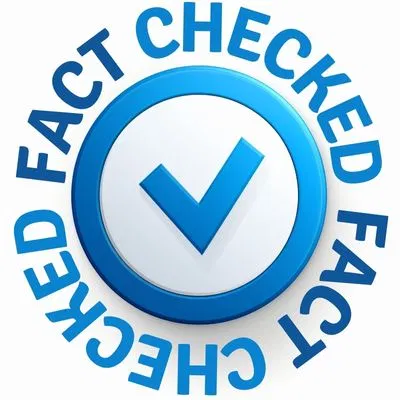Infographics Pros and Cons You Should Know About

Published May 8, 2025
Infographics are everywhere on websites, social media, and emails. They’re eye-catching, easy to understand, and great for sharing big ideas fast. But are they always the right choice? In this guide, we’ll explore the pros and cons of infographics so you can decide when to use them and when to skip them.
Whether you’re a marketer, blogger, or business owner, knowing the strengths and weaknesses of infographics can help you create better content. Let’s break it down, what works, what doesn’t, and what to watch out for when using visual storytelling in your content strategy.
What Are Infographics?
Infographics are more than just pretty pictures. They’re a powerful way to tell a story using images, icons, charts, and minimal text. Imagine squeezing a 1,000-word blog into a vibrant visual that people can understand in seconds.
That makes infographics so popular: they grab attention and deliver value fast. Whether it’s data, steps, or comparisons, the visual format helps people “see” what you’re trying to say. But here’s the catch: not all infographics are created equal. Before you start designing, it’s worth learning about the infographics pros and cons. Because great visuals can help or hurt your message.

The Pros of Using Infographics
Infographics can be your secret weapon in a world full of scrolling. Why? They’re engaging, easy to share, and help people remember your content. Studies show that visuals help with memory retention, so an infographic is a smart move if you want your audience to remember your key points.
They also break down complex information into bite-sized chunks, making hard topics easier to digest. Plus, when done well, they boost your brand’s credibility and can even go viral. Infographics help showcase expertise, drive traffic, and keep readers hooked. But even this visual powerhouse has its downsides, which we’ll cover next.
The Cons of Using Infographics
Here’s the plot twist: infographics aren’t always the best option. They take time to design, and bad design can do more harm than good. Some infographics are cluttered, hard to read, or too small to understand on mobile.
Others confuse viewers instead of informing them. And let’s not forget the SEO issue, search engines often treat infographics as images, meaning the text inside isn’t always searchable unless paired with alt text or a detailed post. There’s also the risk of misrepresenting data if you’re not careful. Bottom line: Infographics are powerful, but only when used strategically.

Who Should Use Infographics?
Infographics aren’t just for designers or marketers. Bloggers, educators, nonprofits, startups, you name it, can all benefit from using visuals to tell their stories. If you need to explain a process, compare options, or summarize data, an infographic can simplify it for your audience.
Teachers can use them to reinforce lessons. Nonprofits can turn complex impact reports into visuals that donors love. Businesses can visualize roadmaps or stats for clients and teams. The key is knowing your audience. You’re in the right place if they prefer quick, clear information. Just remember: visuals should always add value, not just take up space.
When to Use Infographics
Use infographics to explain something quickly or simplify a complicated idea. They work best for data-driven stories, step-by-step processes, and comparisons. Want to show growth over time or explain survey results? Infographic. Trying to drive engagement on social media? Infographic.
But avoid them for content meant to be deeply analytical, personal, or long-form. Infographics are great attention grabbers, but not the best for everything. Think of them like headlines; you use them to draw people in, not to carry the entire conversation. Knowing when to use them is just as important as how.
FAQs
What are the pros and cons of infographics?
The pros are that they are fun to look at, easy to understand, and great for sharing. The cons are that they take time to make and can be confusing if too messy. That’s why it’s good to know the infographics pros and cons before using them.
What are some good infographic topics?
You can make infographics about steps to do something, fun facts, comparisons, or data from a study. The best topics are simple and helpful for your readers.
What are the 3 important elements of infographics?
Good infographics need a clear message, nice visuals, and correct facts. These three things help people understand your idea quickly.
What are the benefits of infographics?
Infographics help people remember things better and understand ideas fast. They also get more clicks and shares online. That’s one reason many people love the pros of using infographics.
What is the purpose of an infographic?
The main purpose is to show information in a fun and easy way. People can learn just by looking at pictures instead of reading a lot of text.
Final Thoughts
Infographics are a fun and smart way to show ideas. They help people understand fast and remember better. But sometimes, they can be tricky or hard to read if not done well. That’s why knowing the infographics pros and cons is super helpful.
Want to make strong infographics that stand out? Our team at Correct Digital can help. We use expert design and data to make your message clear, bold, and easy to share. Whether it’s for your website, social media, or marketing, we’ve got you covered. Let’s make something awesome together!
Hire The Digital Marketing Experts
We take online businesses and turn them into online empires by employing smart digital marketing strategies. Our team of experts are trained in a myriad of marketing skill including SEO to help you rank higher in search results, and ad management to ensure your message gets seen by the people you want. Need a business website that attracts business? We also specialize in website design and online sales optimization to help your business grow like never before.

This Content Has Been Reviewed For Accuracy By Experts
Our internal team of experts has fact-checked this content. Learn more about the editorial standard for our website here.

About The Author
Rei Bayucca has a wealth of knowledge and experience as a professional writer for multiple industries. It is her mission to ensure that her readers receive high-quality, informative content that is both entertaining and educational. Through her writing, Rei aims to educate and motivate readers.



